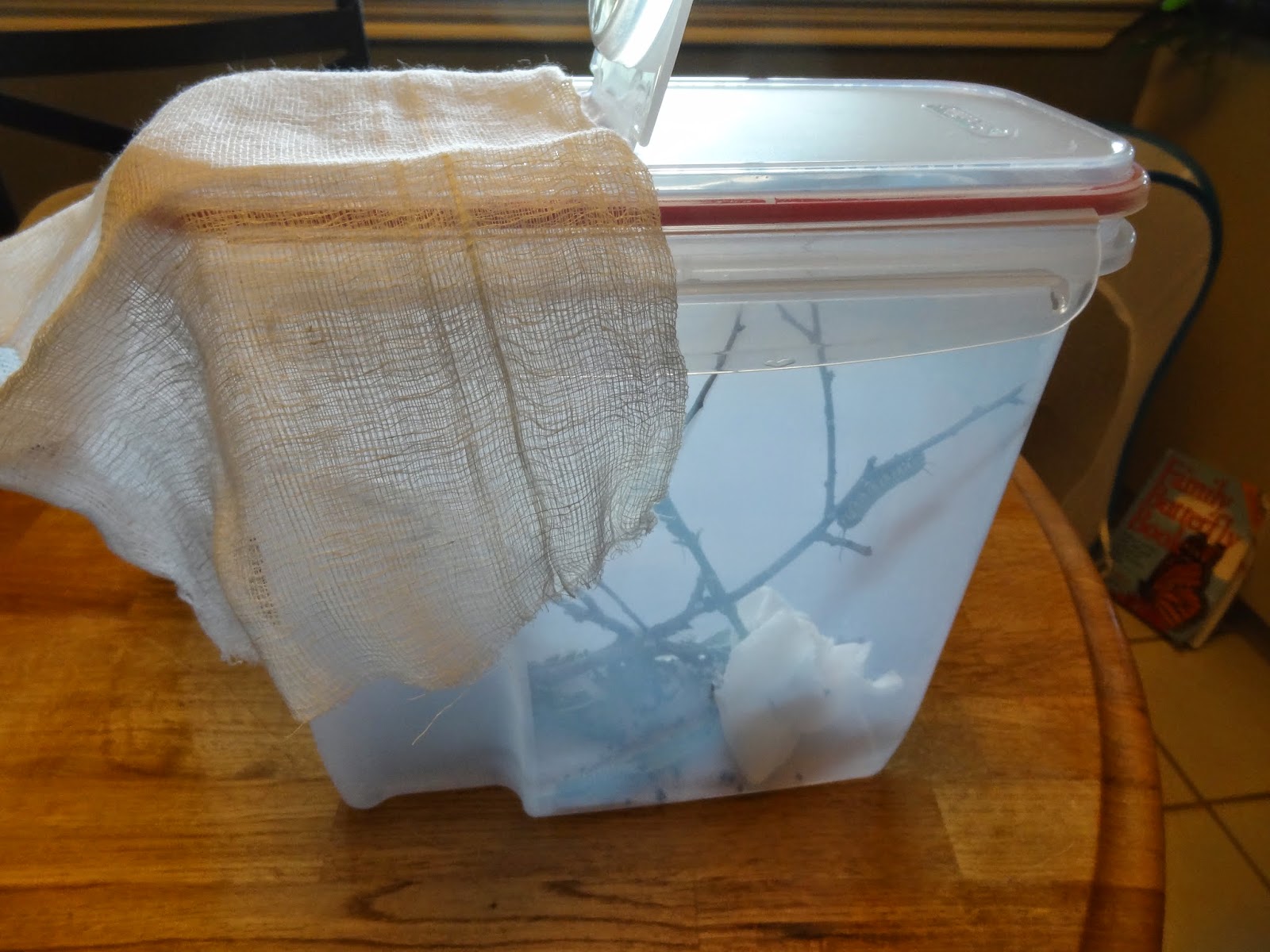WHAT HAPPENED TO MY BABIES?
Nature. The circle of life. Doomsday for the monarchs.
Apparently the resident birds found the new monarch caterpillar buffet and were coming back for seconds.
It just so happens that same day, I found out that monarch caterpillars only have a 10% survival rate in the wild. My mom also happened to read my blog post and told me to bring the caterpillars inside, IMMEDIATELY.
Here I was, proud that I had done my part to help the monarchs. I of course thought that it was my part to just plant the milkweed host plants and let nature run its course. I figured a couple caterpillars may be lost, but that overall, I would end up with a kaleidoscope of butterflies (yes, that is what a group of butterflies is called) by the end of the month. Apparently, I was wrong. It wasn't just enough to plant the host plants for the butterflies. To help this endangered species, I needed to bring the caterpillars inside and foster them to adulthood if I wanted them to have any chance of survival.
So, I quickly ran out and collected the remaining caterpillars. All two of them. I searched online and found the basics I needed to make a habitat for them. Here is what I ended up with:
- Plastic container (I used a cereal tupperwear container)
- Cheesecloth for a ventilating cover
- At least one stick for each caterpillar
- Fresh milkweed leaves
10/6/14 (DAY 1): I placed the two little guys in their new habitat. They didn't do much moving around the first day.
10/7/14 (DAY 2): I found another caterpillar outside (YAY!) on the milkweed and brought him in. The other caterpillars had eaten some of the previous day's milkweed, but I could tell the leaves were starting to dry out and the caterpillars were searching around the top of the container, as if looking for newer and fresher milkweed. So, I gave it to them, this time, providing a full sprig of milkweed and wrapped the stem in some damp papertowel, to hopefully keep the leaves fresher, longer. The babies seemed to like it.
10/8/14 (Day 3): I received some supplies in the mail from my mom - a collapsible butterfly habitat that is large enough to raise many butterflies, as well as place a whole potted milkweed plant (if I wanted), as well as a butterfly book guide on how to rear butterflies. My momma is soooo thoughtful! These were actually hers, as she and my little sister raised some butterflies a couple of years ago. Since it is starting to freeze in Wisconsin, she said she won't need these for awhile.
I think they like their new home!
TO BE CONTINUED...






On behalf of monarch mommas and babies everywhere I thank you (and your Momma!) for taking in these threatened beauties. It is fascinating to see what can be done to help out. I think with these posts you are providing a great tutorial for any of the rest of us who might find ourselves in your situation, with monarch caterpillars we could offer protection. Keep up the good work!
ReplyDeleteThanks, Deb. I'm hoping I get at least two of my three babies to adulthood. I'll keep everyone posted. And next year, now that I'm aware of what I should be doing, hopefully I can save even more.
DeleteVery nice! I raised a caterpillar outside this summer in a sheltered spot. He survived to the 5th instar stage, and then one day he crawled off into the Hostas (I'm presuming to form his chrysalis). I never did find a chrysalis nearby, but about 12 days later, two perfect butterflies were mating in the garden. I like to imagine that one of them was the one I fed. They sure do eat tons of Milkweed at the 5th instar stage! Like double what they eat at the earlier stages. Good luck with your monarchs! What fun!
ReplyDeleteYay! I'm so glad you were able to rear your caterpillar (most likely) to adulthood. I've heard that once monarchs know that your home has milkweed and a safe place for their young to grow up, that they are very likely to keep coming back. I hope that's the case and that I keep seeing more and more monarchs every year!
Delete